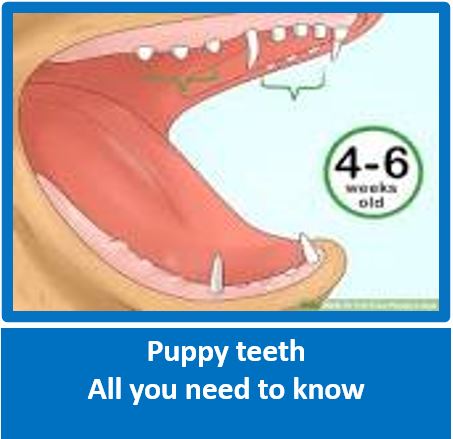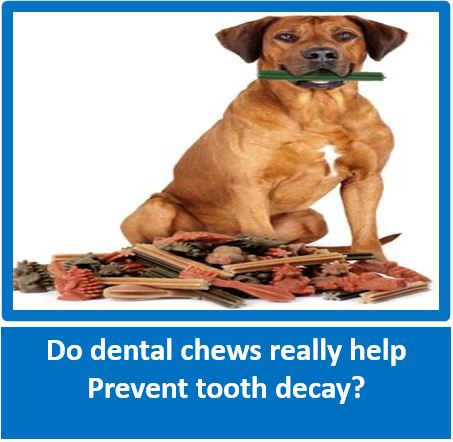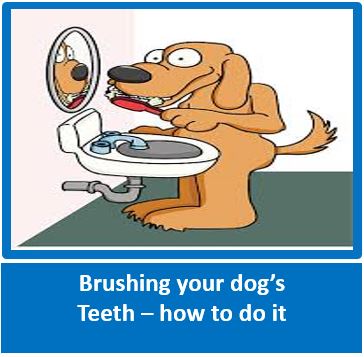
This up-and-coming month, February 2023, we celebrate our pets with whom we share lots of love and plenty kisses. For this reason, we would like to focus on an important issue many pet parents face, Dental Care. As s such there are some super deals to be found, with 25% off Dogs & Cats Dental Toys, 20% of Whimzees, and so much more to help you prevent tooth problems. Do visit us, and see if there is anything that would interest you, and at the same time browse our website - we have just about everything you need for your dog, cat and the little critters - www.mcmac.co.za
5 Interesting Facts About Your Dog's Teeth
By Deidre Grieves from www.petmd.com - PetMD is the online authority for all things pet health. Our goal is to provide the most accurate, reliable, up-to-date pet health information to help you navigate the everyday ups and downs of pet parenting.
By Deidre Grieves from www.petmd.com - PetMD is the online authority for all things pet health. Our goal is to provide the most accurate, reliable, up-to-date pet health information to help you navigate the everyday ups and downs of pet parenting.
According to a veterinary study, dental disease is one of the most common disorders reported by veterinarians. Another study estimates that 80 percent of dogs will develop some form of periodontal disease by the age of 2.
Regular dog dental care is recommended by veterinarians, but few pet owners actually brush their dogs’ teeth. According to a study conducted by Ipsos, just 7 percent of dog owners polled reported brushing their dog’s teeth daily.
“Just as with people a hundred years ago, we used to think that tooth loss was a normal aging change,” says Dr. Milinda Lommer, a board-certified veterinary dentist who practices at Aggie Animal Dental Center in Mill Valley, California. “Now we know that tooth loss is the direct result of a disease process and it is not normal.”
To better understand how to care for dog teeth, it’s important to understand the makeup of dog teeth and how to best ensure dog tooth health. Here are some facts you probably didn’t know about dog teeth.
Facts About Dog Teeth
1. Dogs Go Through Two Sets of Teeth in Their Lifetime
Just like people have baby teeth, dogs have puppy teeth that are later replaced, says Dr. Donald Beebe, a board-certified specialist in veterinary dentistry and the hospital director at Apex Dog and Cat Dentistry in Englewood, Colorado.
“Puppy teeth—also known as deciduous teeth or milk teeth—work much like an adult dog’s teeth but on a smaller scale,” he says. “Starting around 4 months of age and extending to around 6 months of age, the deciduous teeth begin to exfoliate. Compared to human children, in which the process takes place over years, in puppies, the transition is very rapid, over a matter of weeks.”
Dr. Beebe says that puppies lose their teeth in a way similar to human children—they become loose and eventually fall out. The root of the tooth is then naturally absorbed into the gums, he says.
2. Adult Dogs Have More Teeth Than Humans
Dr. Beebe explains that puppies have only about 28 deciduous dog teeth that they shed to make way for permanent adult dog teeth.
“Adult dogs have 42 teeth. Most people have 32,” he says. “In comparison, adult cats have 30 teeth.”
Dr. Beebe says that adult dog teeth begin to form before birth. “Later in life, they erupt into position as their deciduous counterparts are shed,” he says.
3. Dogs Use Their Teeth Differently Than Humans
While the makeup and chemical structure of dog teeth is similar to those of human teeth, the size and shape of dog teeth are where the biggest differences come into play.
“The most prominent teeth are the long and pointy canines,” Dr. Beebe says. “They are used for grasping, lifting, pulling and potentially for defence. Further back in the mouth, the large carnassial teeth are designed to shear against one another, to provide a slicing action.”
“This is in contrast to human teeth, which typically grind against one another to pulverize food. Dogs can’t really smash up their food like people because their teeth are not designed that way,” explains Dr. Beebe.
4. Canine Teeth Root Structure Differs a Bit From Humans
“Canine root structures are similar to human root structures except that in dogs, the three upper molars have two roots, whereas the two lower molars have three roots,” says Dr. Lisa Lippman, a veterinarian based in New York City.
Additionally, the roots of a dog’s tooth are long, adds Dr. Lommer. “Most people are surprised by how long the roots are,” she says. “The visible crown is usually only about one-third the length of the tooth. For incisor teeth, the crowns are only about one-fourth the length of the tooth.”
5. Cavities in Dog Teeth Are Extremely Rare
Because the bacteria in a dog’s mouth are different from the bacteria in a human’s mouth, cavities in dogs don’t happen often.
“Cavities are caused by specific bacteria that live on flat surfaces of teeth and metabolize sugars into acid,” says Dr. Lommer. “Dogs don't usually consume as much sugar as humans do, and the species of bacteria that causes cavities are very rare in dogs' mouths.”
Dr. Beebe explains that when cavities occur in dogs, they are usually caused by sweet treats such as bananas or sweet potatoes. “The treatment for cavities in dogs is the same as for people,” he says. “The diseased tooth structure is removed and replaced with a composite filling.”
Regular dog dental care is recommended by veterinarians, but few pet owners actually brush their dogs’ teeth. According to a study conducted by Ipsos, just 7 percent of dog owners polled reported brushing their dog’s teeth daily.
“Just as with people a hundred years ago, we used to think that tooth loss was a normal aging change,” says Dr. Milinda Lommer, a board-certified veterinary dentist who practices at Aggie Animal Dental Center in Mill Valley, California. “Now we know that tooth loss is the direct result of a disease process and it is not normal.”
To better understand how to care for dog teeth, it’s important to understand the makeup of dog teeth and how to best ensure dog tooth health. Here are some facts you probably didn’t know about dog teeth.
Facts About Dog Teeth
1. Dogs Go Through Two Sets of Teeth in Their Lifetime
Just like people have baby teeth, dogs have puppy teeth that are later replaced, says Dr. Donald Beebe, a board-certified specialist in veterinary dentistry and the hospital director at Apex Dog and Cat Dentistry in Englewood, Colorado.
“Puppy teeth—also known as deciduous teeth or milk teeth—work much like an adult dog’s teeth but on a smaller scale,” he says. “Starting around 4 months of age and extending to around 6 months of age, the deciduous teeth begin to exfoliate. Compared to human children, in which the process takes place over years, in puppies, the transition is very rapid, over a matter of weeks.”
Dr. Beebe says that puppies lose their teeth in a way similar to human children—they become loose and eventually fall out. The root of the tooth is then naturally absorbed into the gums, he says.
2. Adult Dogs Have More Teeth Than Humans
Dr. Beebe explains that puppies have only about 28 deciduous dog teeth that they shed to make way for permanent adult dog teeth.
“Adult dogs have 42 teeth. Most people have 32,” he says. “In comparison, adult cats have 30 teeth.”
Dr. Beebe says that adult dog teeth begin to form before birth. “Later in life, they erupt into position as their deciduous counterparts are shed,” he says.
3. Dogs Use Their Teeth Differently Than Humans
While the makeup and chemical structure of dog teeth is similar to those of human teeth, the size and shape of dog teeth are where the biggest differences come into play.
“The most prominent teeth are the long and pointy canines,” Dr. Beebe says. “They are used for grasping, lifting, pulling and potentially for defence. Further back in the mouth, the large carnassial teeth are designed to shear against one another, to provide a slicing action.”
“This is in contrast to human teeth, which typically grind against one another to pulverize food. Dogs can’t really smash up their food like people because their teeth are not designed that way,” explains Dr. Beebe.
4. Canine Teeth Root Structure Differs a Bit From Humans
“Canine root structures are similar to human root structures except that in dogs, the three upper molars have two roots, whereas the two lower molars have three roots,” says Dr. Lisa Lippman, a veterinarian based in New York City.
Additionally, the roots of a dog’s tooth are long, adds Dr. Lommer. “Most people are surprised by how long the roots are,” she says. “The visible crown is usually only about one-third the length of the tooth. For incisor teeth, the crowns are only about one-fourth the length of the tooth.”
5. Cavities in Dog Teeth Are Extremely Rare
Because the bacteria in a dog’s mouth are different from the bacteria in a human’s mouth, cavities in dogs don’t happen often.
“Cavities are caused by specific bacteria that live on flat surfaces of teeth and metabolize sugars into acid,” says Dr. Lommer. “Dogs don't usually consume as much sugar as humans do, and the species of bacteria that causes cavities are very rare in dogs' mouths.”
Dr. Beebe explains that when cavities occur in dogs, they are usually caused by sweet treats such as bananas or sweet potatoes. “The treatment for cavities in dogs is the same as for people,” he says. “The diseased tooth structure is removed and replaced with a composite filling.”




